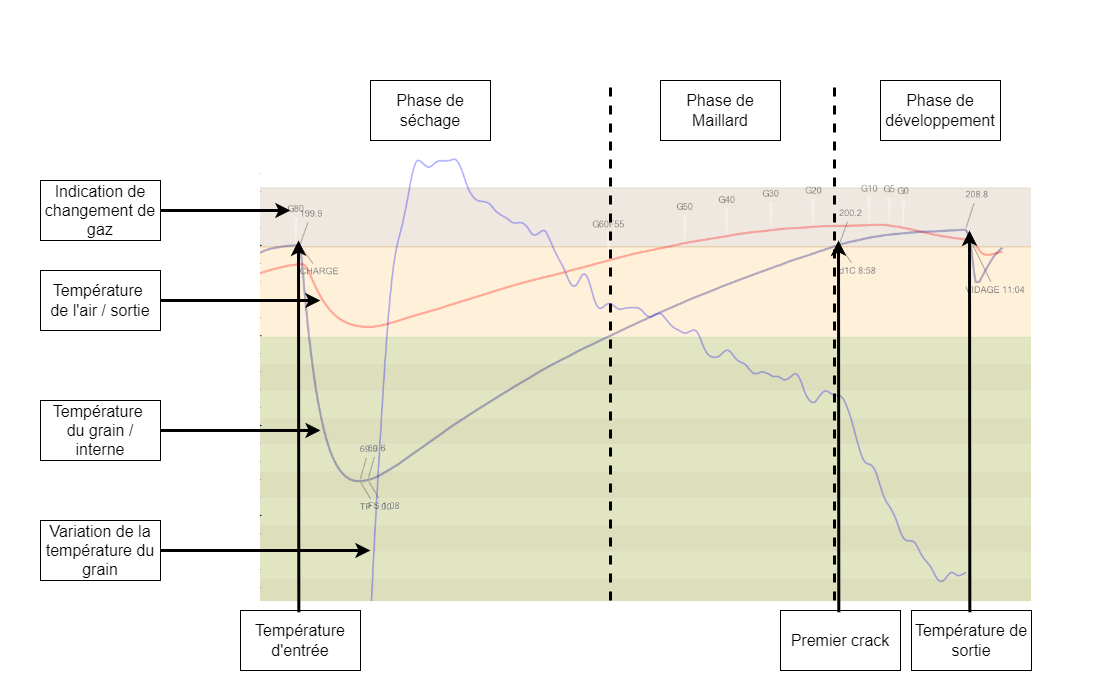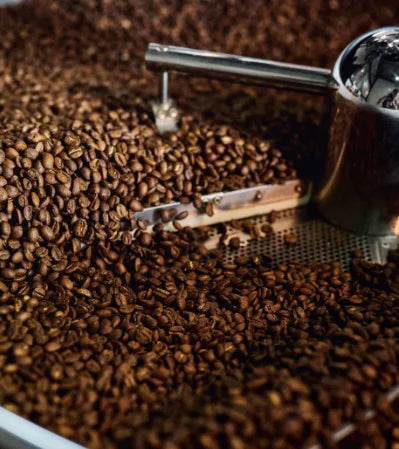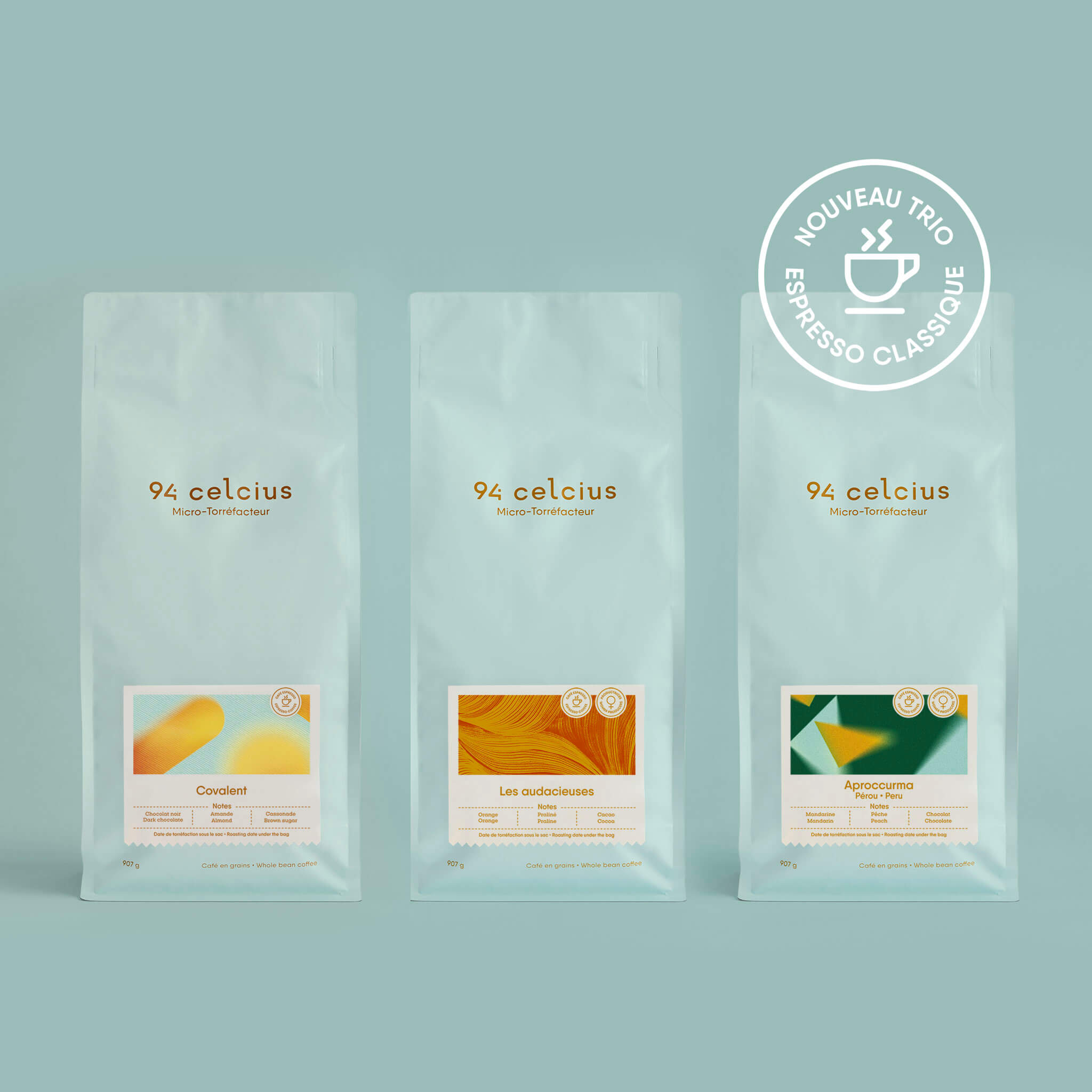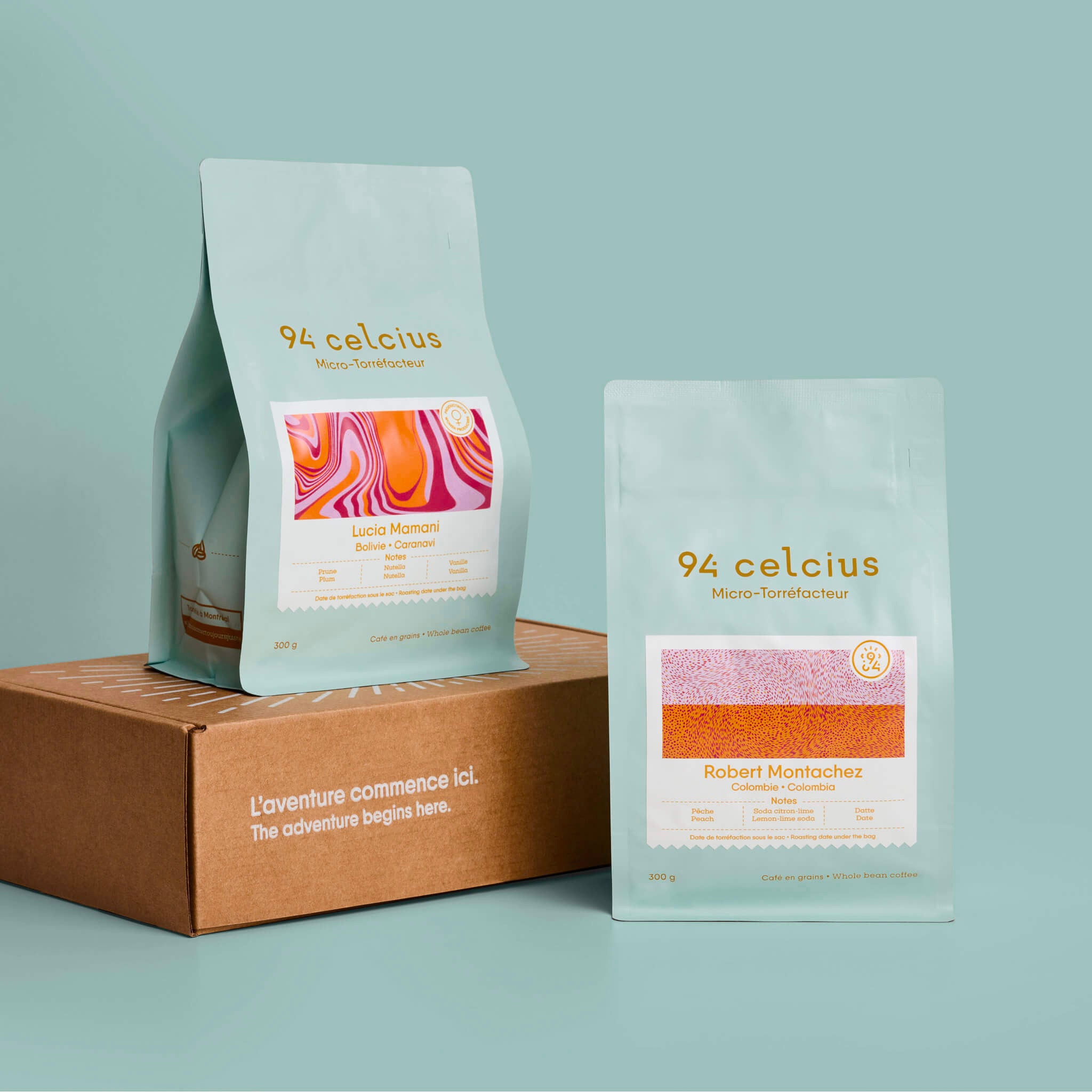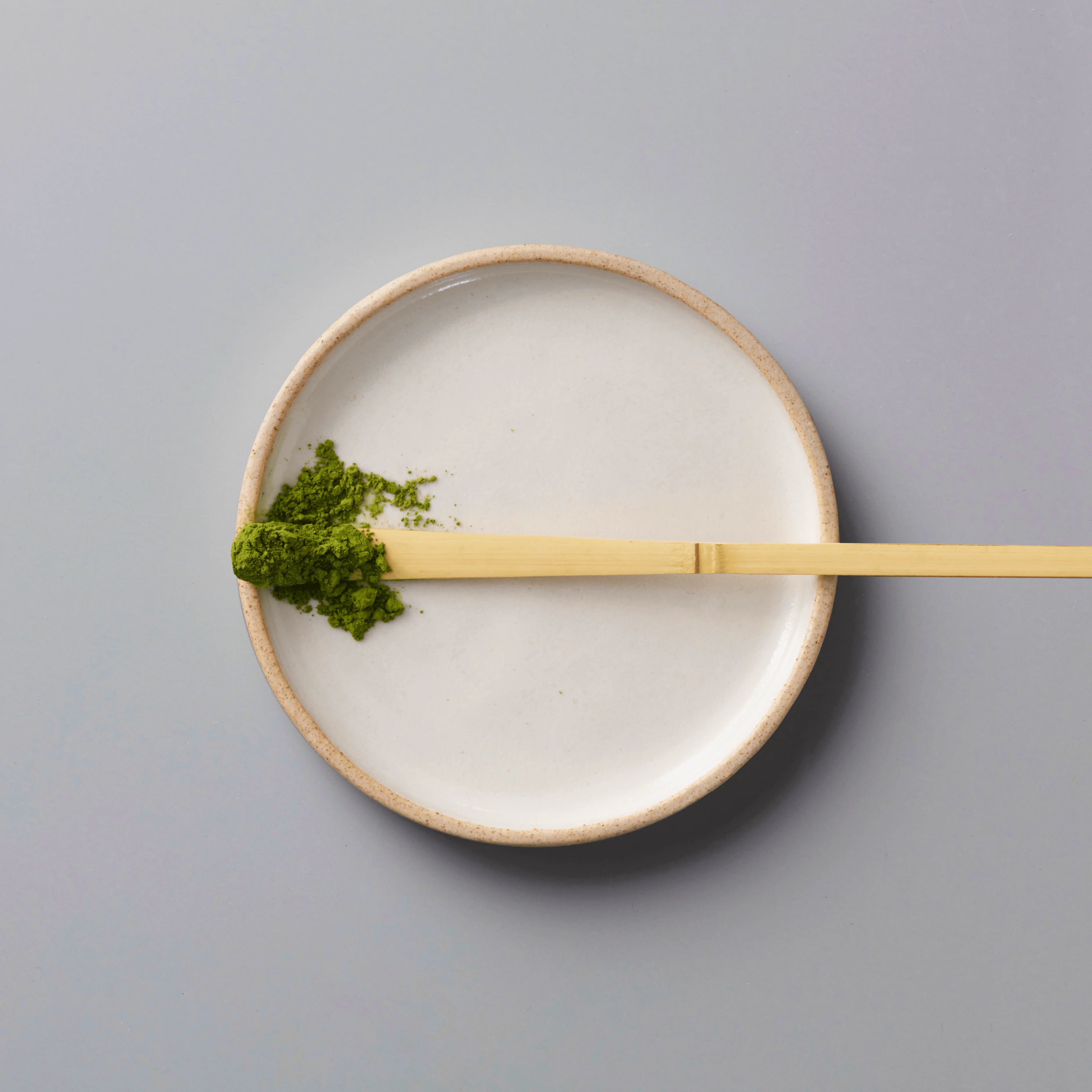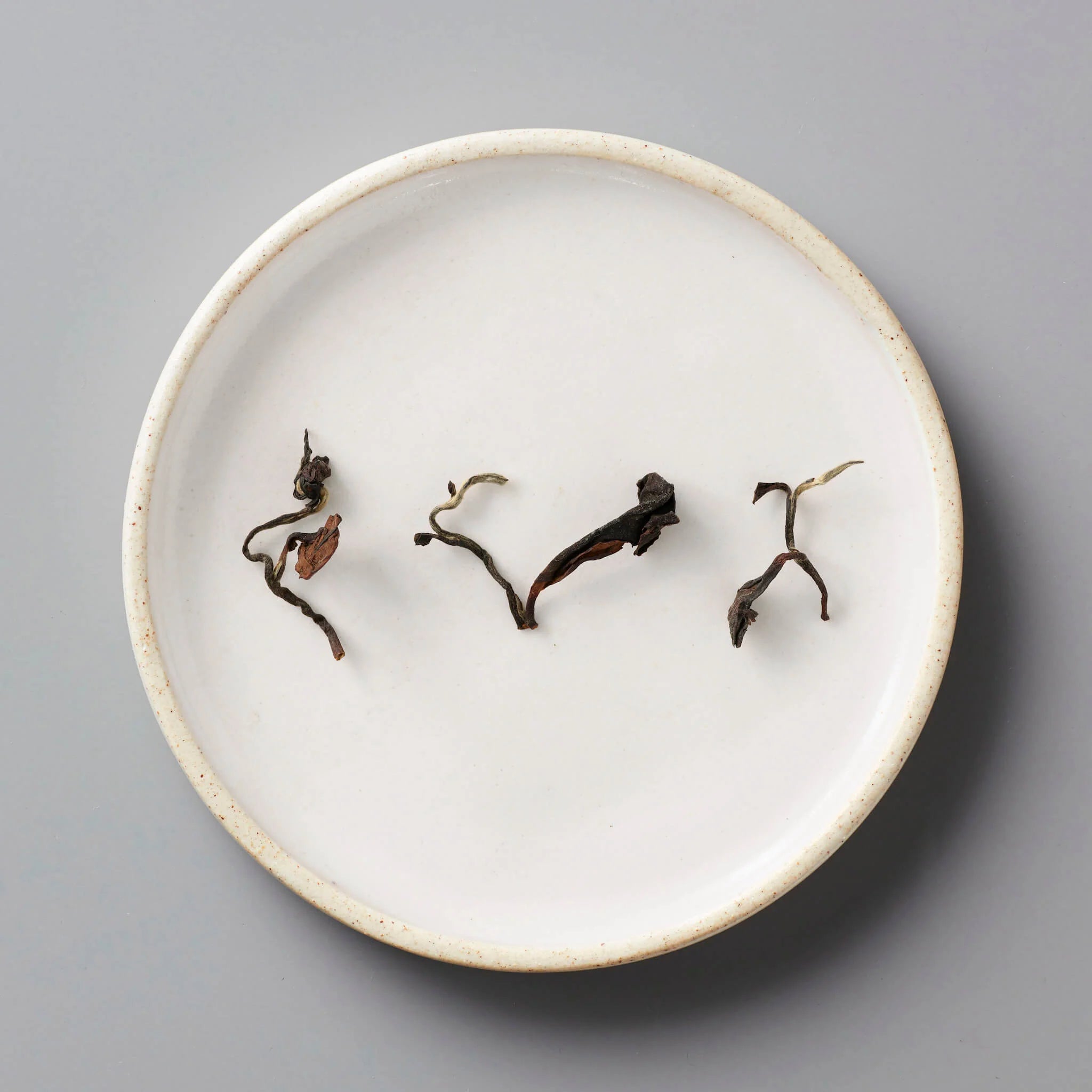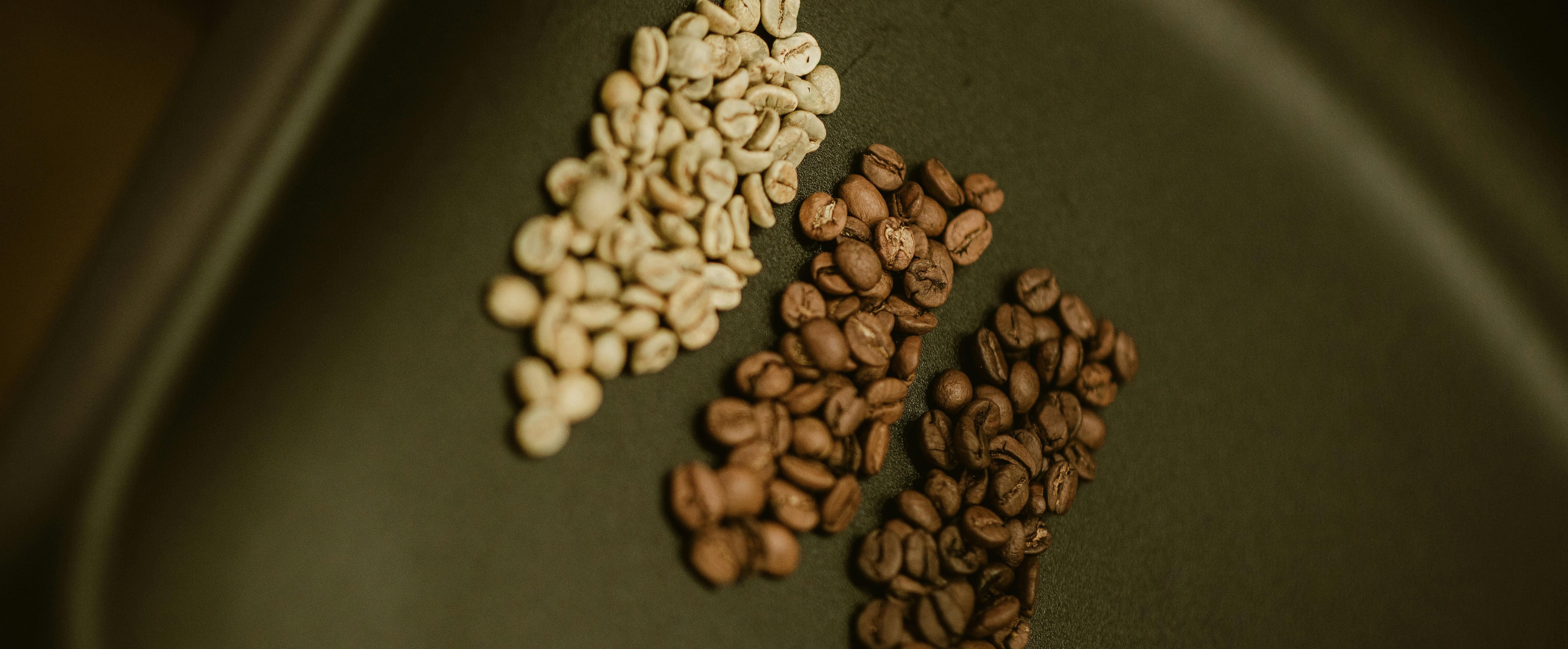You have just received your precious bag of 94 Celcius coffee and you have a whole bunch of questions?
Our Getting Started in Coffee series is here to help you take your first steps into the world of specialty coffee. We’ll cover topics like storage, extraction , and roasting basics, among others.
Welcome, and above all, don't hesitate to ask us your questions!
Understanding Coffee Roasting
You like your coffee roasted darker for increased intensity, or lighter for fruitier notes. But do you know what a dark roast entails? How does roasting coffee help reveal its full potential?
Therein lies the art of roasting!
In this article, we will introduce you to the basics of roasting.
What is roasting?
Roasting is the process of cooking coffee (as well as other organic materials such as cocoa or nuts) to reduce its moisture content and develop its flavors.
The roaster is a key piece of equipment in this process, consisting of a drum in which the green beans are placed, rotated, and heated. Historically, the heat source was wood or coal placed under the drum. Today, roasters use modern heat sources, such as electricity or gas, which influences how the beans cook and, therefore, how their flavors develop (similar to the difference in cooking between an electric oven and a gas oven).
In the specialty coffee world, roasting typically lasts between 9 and 12 minutes . During this short time, the beans go through several stages of processing:
- Color change : from green-gray to yellow, then to orange, and finally to brown.
- Weight loss : approximately 16% of initial weight.
- Change in texture : the grains swell, become porous and more digestible.
These transformations are linked to various chemical reactions which allow the development of the unique aromas of coffee.
